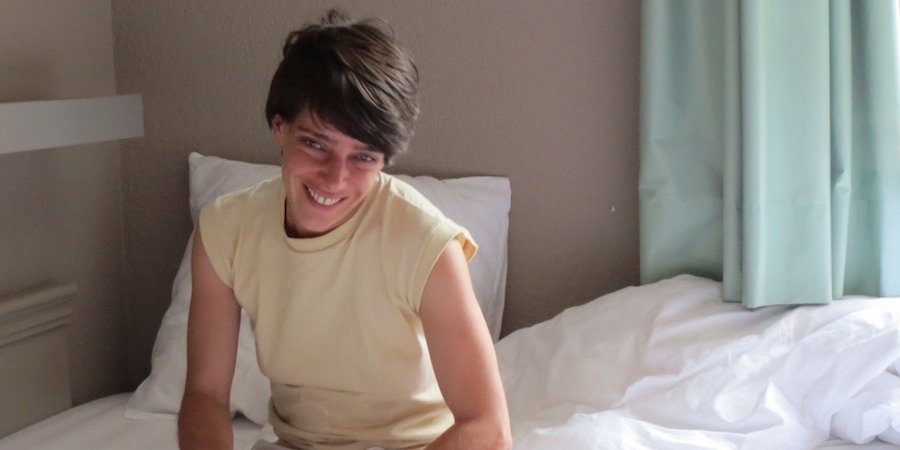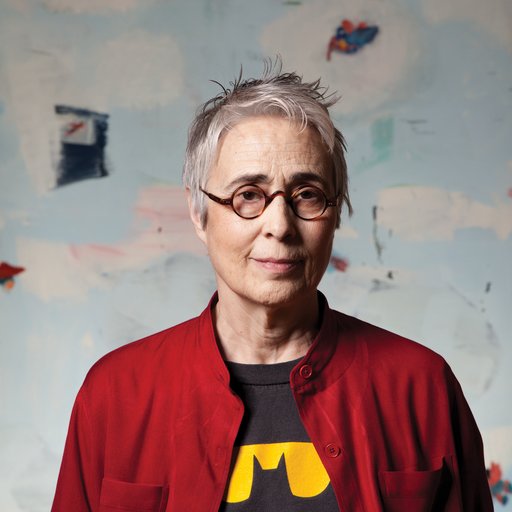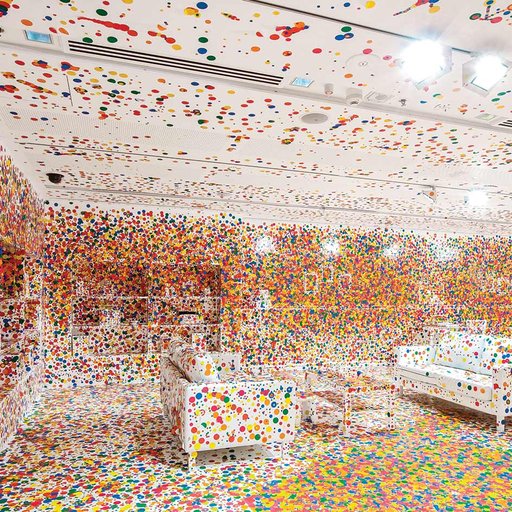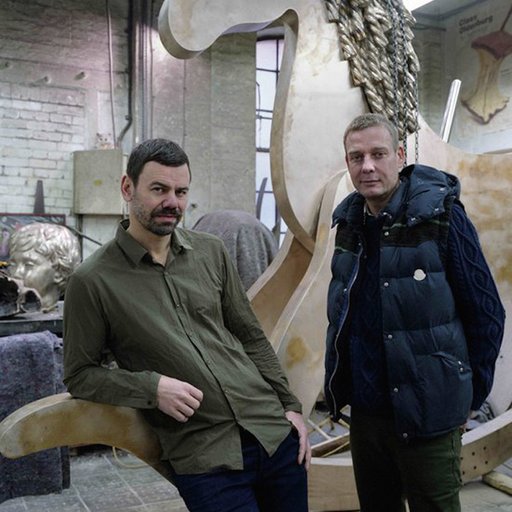TARA DONOVAN
Parrish Art Museum, July 4 - October 12
In her large-scale sculptures and installations, Tara Donovan multiplies common disposable objects until they become capacious clusters with totally new formal properties. Her new show at Pace Gallery in New York features her "pin drawings," large-scale works each consisting of tens of thousands of individual pins mounted on gatorboard; her previous show included treelike towers of index cards and spherical arrangements of acrylic rods that resembled wispy dandelion seed heads. For her summer solo on the East End, the MacArthur “Genius” grant recipient is using the classic children’s toy known as the Slinky—weaving hundreds of these bouncy metal coils into dense, baroque knots. The exhibition is part of the museum’s “Platform” series of site-specific commissions, so expect some playful interactions with the Parrish’s stunning Herzog & de Meuron-designed building.
LILI REYNAUD-DEWAR
MCA Chicago, "The Freedom Principle," July 11 – November 22
C L E A R I N G, Brussels, June 26 – September 13
Praised as “brilliant” by the New York Times for her dazzling breakout contribution to the current Venice Biennale, the French artist, dancer, and critic Lili Reynaud-Dewar studied law and ballet before beginning to make art a decade ago at the age of 30—launching her on a trajectory that has made her one of the most compelling talents at work today. Her Venice piece, a riot of videos showing a nude Reynaud-Dewar painted in bright monochromes and dancing disruptively in various elegant settings, was accompanied by inspirational punk anthems and signage advocating for a strange form of sexual liberty that involves sharing STDs. It’s called My Epidemic, and it's emblematic of the kind of work she does that thrusts the audience into the uncomfortable space between intimacy and voyeurism. (A previous work consisted of inviting her art-school students into her bedroom for a crit.) Taking her inspiration from sources as varied as modern dance and the resistance narratives embedded in American black culture, the artist is being included this month in the MCA Chicago’s new show “The Freedom Principle: Experiments in Art and Music, 1965 to Now” and she also has a concurrent show in Brussels with her gallery, Clearing.
JENNY HOLZER
Hauser & Wirth Somerset, July 12 - November 1
Hauser & Wirth’s Somerset location is playing host to a new solo exhibition by the celebrated American artist Jenny Holzer. Know for her conceptually-driven pieces that often incorporate aphoristic texts, Holzer comes out of the generation of feminist artists like Cindy Sherman and Louise Lawler that came of age in the 1970s and '80s. Holzer’s work is notable in part due to its mutability; her process expands across multiple media, including everything from park benches to race cars. Hauser & Wirth’s exhibition (spanning all five gallery spaces) will showcase works from across Holzer’s career, including her classic Truisms as well as a new LED work commissioned for the show.
ALEX KATZ
Colby College Museum of Art, July 11 – October 18
Alex Katz’s spring show of new landscapes at Gavin Brown’s Enterprise drew raves from, among others, the New York Times’s Roberta Smith, who called it “one of the best exhibitions of his career.” This month, the focus shifts to the 87 year-old artist’s early work; “Brand-New & Terrific: Alex Katz in the 1950s,” in the artist's beloved Maine, spotlights the against-the-grain representational paintings, cutouts, collages, and drawings he made during the heyday of Abstract Expressionism. Some, like 1952’s “Picnic Lunch,” reveal a formative interest in Manet. To the South, meanwhile, the just-opened exhibition "Alex Katz: This Is Now," at the High Museum of Art through September 6, offers a comprehensive survey of Katz's landscapes.
CHRIS OFILI
Tate Liverpool, "Glenn Ligon: Encounters and Collisions," June 30 - October 18
With the great British painter Chris Ofili’s masterpiece The Holy Virgin Mary going ruthlessly under the hammer at Christie’s London on June 30—sent there by the philosophical Australian gambler David Walsh—July starts with the inevitable headlines pairing its high price with the lowly material (elephant dung) that made this earnest devotional painting into a lightning rod during the “Sensation” sensation. Of course, the artist is no longer the shocking upstart he was then—given his own room in this year’s Venice Biennale, he’s now an acknowledged master of his medium, ensconced in permanent collections around the world and venerated by his fellow artists. One of these artists, Glenn Ligon, is now in fact paying tribute to Ofili in “Glenn Ligon: Encounters and Collisions,” a curated group show at Tate Liverpool in which Ligon surveys his artistic inspirations.
JOAN MITCHELL
Kunsthaus Bregenz, July 18 – October 2015
When the downtown Whitney opened in May, visitors noted that Joan Mitchell’s tempestuous green-and-white painting Hemlock (1956) had pride of place in the museum’s gallery of Abstract Expressionism. That installation choice was just the latest sign of a new appreciation for Mitchell (1926-1992), whose auction prices have been on the rise (at Christie’s last year, an untitled abstraction from 1960 set new records for the artist and for the entire category of female artists at auction) and who is now the subject of a sweeping retrospective in Bregenz. The show (organized with the Joan Mitchell Foundation and with Museum Ludwig in Cologne) credits Mitchell as an important bridge between American and European abstraction, connecting her early New York School years to her late period in Vétheuil, France, where she made landscapes that were very much in the muscular Ab-Ex tradition but also explored the more genteel legacy of late Monet.
ADAM PENDLETON
MoCA Denver, July 14 - August 30
In terms of contemporary updates to conceptualism, few have provided as pointed a critique as Adam Pendleton’s Black Dada series, which mines the artist’s archive for material from which to create dense mediations on race and identity. Pendleton eschews most colors in his subtle yet challenging works, preferring to ground his works in the writings of thinkers like W.E.B. DuBois and Amiri Baraka. His works will be included among several other artists from North and South America in the Museum of Contemporary Art Denver’s group show “Now? NOW!”, presented as a part of Denver’s Biennial of the Americas Festival.
STANLEY WHITNEY
The Studio Museum in Harlem, July 16 - October 25
The Philadelphia-born painter Stanley Whitney’s pieces take an old abstract mainstay, the painted grid, and infuse it with a painterly touch. His painted rows of squares may suggest a Minimalist bent, but unlike his Greenbergian predecessors, vivid hues and the human hand come to the forefront of these weighty compositions. Whitney draws from the free-form creativity of jazz as well as the innovations of Italian and Egyptian architecture, making paintings so full of color they seem to burst at the seams. The Studio Museum in Harlem will show works made since 2008, a useful rejoinder to what some consider to be the sub-par abstractions currently flooding the market.
BRION GYSIN
October Gallery, July 2 – August 1
The sleek CVs and designer wardrobes of today’s professionalized art scene can make one long for the days when real, 100 percent freaked-out weirdos strode the earth—members of the avant-garde who lived outsize lives interwoven into the history of their time, yet whom you might be leery of taking the elevator with. Brion Gysin was such a figure. Kicked out of the Surrealist movement by André Breton at age 19, he served in the U.S. army during WWII, ran a restaurant in Tangier, invented a “cut-up” technique of Dada-inspired writing that he shared with William Burroughs (who called him "the only man I truly respected"), and created a brand of experimental art that ranged from cultic drawings to his famed “Dreamachine” of 1961, which used a flicker effect to mesmerize audiences. The subject of a critically acclaimed 2010 survey at the New Museum, Gysin’s work is primed to expand new minds at London’s October Gallery this month.
FRANK BENSON
Tanya Bonakdar, "Objects Food Rooms," July 1 – 31
The artist Frank Benson has an approach to sculpture that, in a way, unexpectedly recalls the early work of Claes Oldenburg: he manages to make icons out of familiar objects by skewing them surreal. But whereas Oldenburg did so in terms of out-of-whack scale and materiality, Benson accomplishes his aim through twisted hyperfidelity—a feat we saw in perhaps the signal sculpture of the year, his kustom-kar-painted nude statue of the transgender artist Juliana Huxtable at the New Museum Triennial. This month, delve further into Benson’s gripping oeuvre at Tanya Bonakdar, where his work is featured in a group show, “Object Food Rooms,” curated by the Public Art Fund’s Andria Hickey, who also oversaw the on-point recent “Image Objects” show in City Hall Park.



























